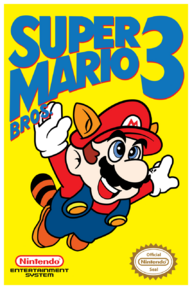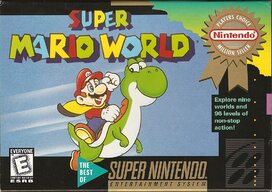- Image pushed the idea that artists, not writers, were the backbone of the industry. They put out comics that were so artist-focused that we got several that were "pretty" (in a 90s dark-n'-edgy sense) but had nothing worth reading to go with it. Spawn was so badly written, some fanmail printed in the back of comics asked McFarlane to hire a writer. (After he did, there was fanmail patting him on the back for finally relenting.)
@miguk Really interesting post, I'm just gonna add a few thoughts. To the above, I would argue that Image was founded primarily by artists, but they weren't making a statement about who was more important, them or the writers. The point was that creators would own their work, as opposed to the policy of DC/Marvel.
They *did* suck at writing, absolutely, but the real disappointment wasn't McFarlane hiring out (plenty of comics were terrible), it was that he hired several guest writers like Alan Moore and Neil Gaiman, and then refused to credit Gaiman specifically or pay royalties for characters he'd created. Basically, he quickly undermined the whole point of Image Comics, and started on his road to Typical Mogul, up to and including buying his favorite sports team.
- The early issues wrote it into a hole. Remember the "timer" (or whatever that was)? It had to be written out in order for the series to continue. And the series seemed to hinge way more on its origin story than, say, Batman, to the point that tons of issues were just Al moping in an alley about how much life sucks. It's no wonder McFarlane came close to switching it over to a buddy cop series that just happened to have the mopey guy in a supporting role.
I got my brother a huge collection of Spawn awhile back for a nostalgic birthday gift, and re-read some of it while I was at it. The thing that jumped out at me was how badly McFarlane was trying to ape Frank Miller, specifically The Dark Knight Returns. He uses the talking heads on TV, the pundits presenting the opposing political takes on whatever is going on in the story, the general mood and tone of the setting...he's missing the weird political core of Miller though, the libertarians of the 80's who hated Reagan *and* Jimmy Carter. Miller wrote very anti-establishment, but he still had empathy and characters who were trying to be heroic. (That being said, Miller wrote Spawn #11, I think, so he didn't mind the imitation.)
- Prices for comics skyrocketed (and never went back down) as a direct result of the artist-focused mindset. We stepped out of the era of comics being a working class hobby (issues costing less than gum) to comics being a middle class hobby (graphic novels costing more than hardcover novels). Part of that was the new costs from glossy prints, and part of that was the image of comics being collector's items. Spawn was at the forefront of the idea of new comics (rather than old) being valuable investments, and prices went up with that. And that led to...
- The comics industry nearly died trying to chase the collecting/investment market. Marvel was so wrecked they nearly sold everything to Michael Jackson, and had to sell off the film rights to several series just to keep on going. That, of course, eventually resulted in the Disney buy-out, which hasn't worked perfectly.
- The "dark n' edgy" nonsense never fully left the industry. We've had to endure Ultimate Marvel, DC's New 52, and Zack Snyder's films. And Image is still doing it, just with a "brighter" fascade.
- And we're always on the verge of Spawn getting big again, despite really never changing. McFarlane wants to make a new movie with him as a creative consultant. It might get out of development hell eventually.
In order,
The comics boom and burst was well underway, and in fact the biggest tipping point, X-Men #1 (1991), was a major catalyst for Image being created in the first place. It is *still* the best-selling American comic in history, with multiple covers and print runs and every gimmick under the sun. In the face of the massive profit, with nothing extra coming there, Jim Lee and the others struck out on their own. Marvel kept running that train though, and DC did everything the could to follow. So, just clarifying, it wasn't the artists specifically, but the higher-ups at the publishers capitalizing on the collector boom of the 90's to their detriment. (We really did have one here in America to, from comics to cards to beanie babies, we *loved* the idea that some old crap in Grandad's attic would make us rich.)
Dark and edgy was frustrating, but again, I'd call Spawn a symptom; it was both new authors mimicking Moore and Miller (among others), and the publishers pushing for "the next Watchman/Dark Knight Rises". Spawn was pretty well the Edgiest Edgelord though, at least for the early 90's.
Funny enough, Spawn is actually still going with three separate titles currently, and frequent mini-series and oneshots. It'll probably never have that multi-media crossover again, thankfully. Poor Micheal Jai-White and John Leguizamo, they did their best.


